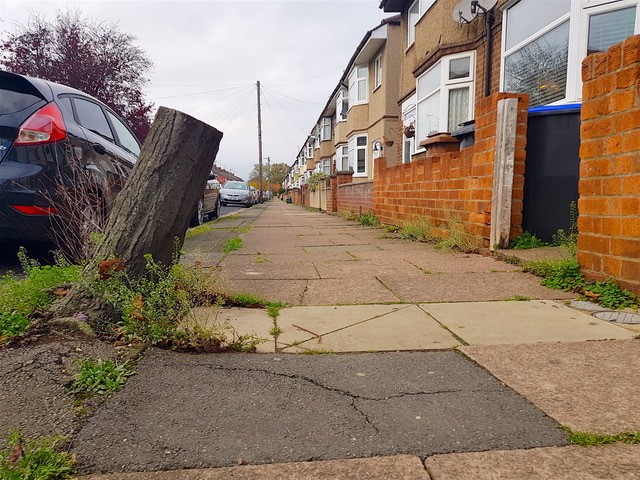Street trees to be reinstated after University of Northampton report charts decline in town’s urban tree population
Date 17.09.2019

Following years of campaigning by residents, a once tree-lined street in Northampton may see its urban trees reinstated – in the first major planting for half a century.
The news comes as a one-of-a-kind academic Street Tree Report by the University of Northampton shows street trees in Far Cotton have decreased by 58 per cent in the last 60 years.
Ten new trees are planned for Penrhyn Road this autumn, as part of a pilot project spearheaded by the Save our Street Trees campaign group in collaboration with The Woodland Trust, Northampton Borough Council and Northamptonshire County Council.
According to the University’s Far Cotton Street Tree Report, commissioned by the campaign group – and the first of its kind for Northampton – the number of trees in Far Cotton has decreased from 457 to 193 since the 1960s. St Leonards Road has seen the most significant drop with just one out of 43 trees in the 1960s remaining.
It is hoped a public consultation will take place in October to canvas Penrhyn Road residents on which trees they would like to see planted. A shortlist of four trees, which includes flowering prunus, hornbeams and field maples, specially grown for narrow urban streets, has been created.
“Tree planting has been allowed to languish for five decades – but this is all changing now thanks to the campaign and the renewed commitment of Northampton councils,” said local resident Alice Whitehead, who founded the Save Our Street Trees campaign in 2016. “It is incredibly exciting to think that our urban roads could once again become the beautiful tree-lined streets they once were – with all the benefits that come with it.”
Joseph Coles, street tree lead at The Woodland Trust, said: “It’s been fantastic to work with Alice on this pilot project to reinstate lost street trees, and we’re really excited that it may become a reality in Penrhyn Road this year. Lack of appreciation, shrinking budgets and simple neglect means our street trees are disappearing and it’s up to all of us to stand up and demand change. In 2018, we helped 500 similar community groups celebrate and protect their street trees, and worked with local authorities across the country to put in place policies that recognise the true value of trees in urban environments.”
Joanna Wright, Senior Lecturer in Geography and Environmental Science at the University of Northampton, who assisted Nuffield student Ria Berry in putting together report, which was partly funded by the Nuffield Foundation, said: “We hope the report findings will help drive home the message that our urban trees are an important benefit to us and something that needs our attention and protection.”

One of the trees that will be planted in Penrhyn Road.

A Penrhyn Road street tree. Photos: Save Our Street Trees

An existing tree in Penrhyn Road.

One of Penrhyn Road’s street trees.
Alice says the Penryhn project won’t be the last. “If the project succeeds, we will push for it to become a blueprint for further street tree projects across Northampton,” she said. “The University report has made it very clear tree numbers have dropped significantly – and it’s not unreasonable to extrapolate that this is a pattern repeated across Northampton.
“Planting trees should not be seen as a cost but an investment that sees returns, both financially, environmentally and in the health of residents. As well as supporting wildlife and wellbeing, other studies have shown that businesses are more likely to invest in locations with tree cover, areas with higher vegetation have lower rates of crime, and street trees reduce water runoff, wind speed, heat loss from buildings, pollutants and greenhouse gases. Therefore allowing tree numbers to fall is exposing residents to more air pollution and other harmful effects, reducing their quality of life and ultimately costing the council money.”